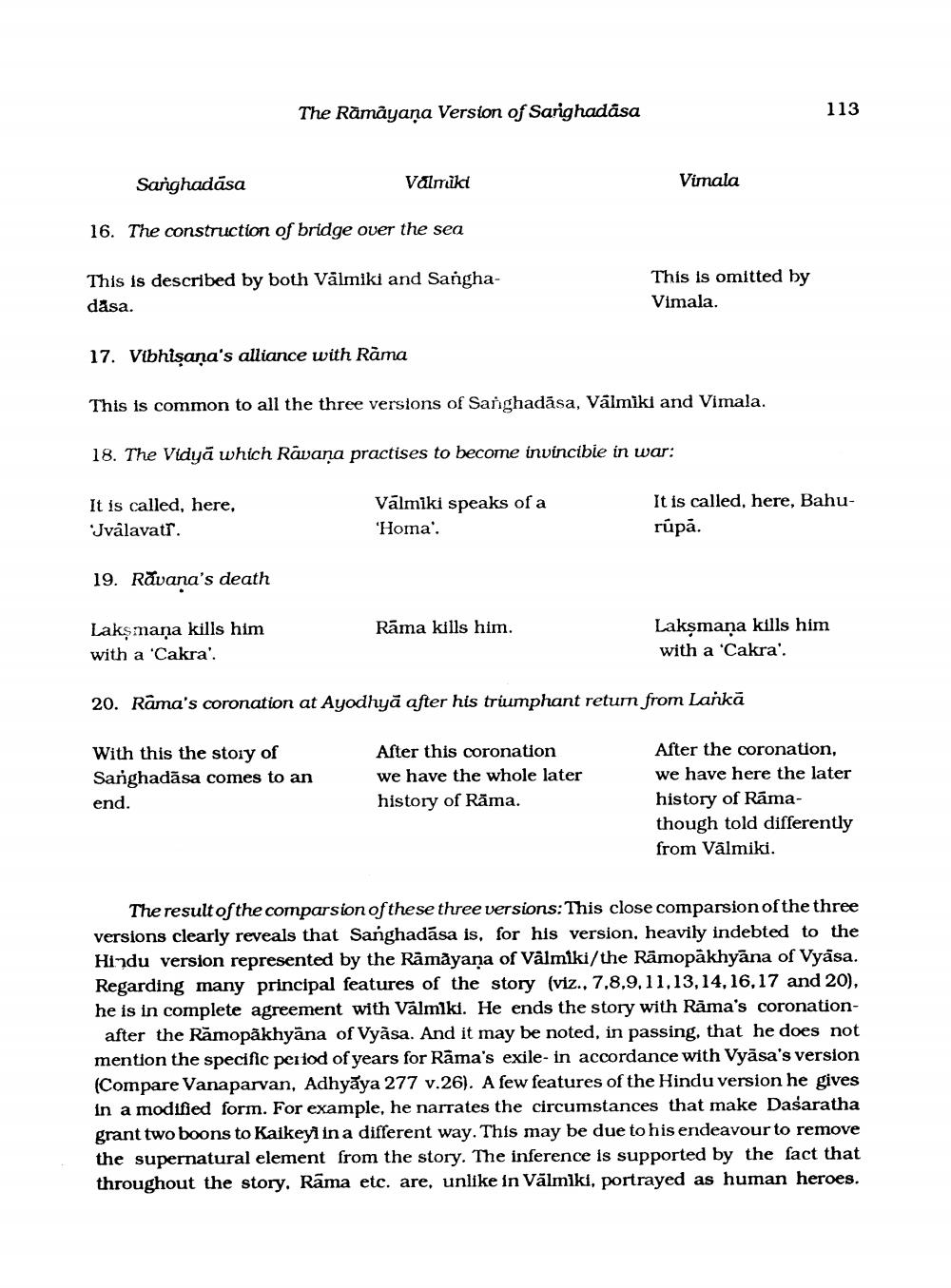________________
The Rāmāyaṇa Version of Sarighadása
113
113
Sanghadāsa
Valmiki
Vimala
16. The construction of bridge over the sea
This is described by both Valmiki and Sanghadasa.
This is omitted by Vimala.
17. Vibhlşana's alliance with Rāma
This is common to all the three versions of Sanghadāsa, Valmiki and Vimala.
18. The Vidyā which Rāvana practises to become invincibie in war:
It is called, here, Uvalavatr.
Valmiki speaks of a 'Homa'.
It is called, here, Bahurúpa.
19. Rāvana's death
Rama kills him.
Lakşmaņa kills him with a 'Cakra'
Lakşmaņa kills him with a 'Cakra'.
20. Rama's coronation at Ayodhyā after his triumphant return from Lankā
With this the story of Sanghadāsa comes to an end.
After this coronation we have the whole later history of Rāma.
After the coronation, we have here the later history of Ramathough told differently from Valmiki.
The result of the comparsion of these three versions: This close comparsion of the three versions clearly reveals that Sanghadāsa is, for his version, heavily indebted to the Hindu version represented by the Rāmāyana of Valmiki/the Rāmopākhyāna of Vyäsa. Regarding many principal features of the story (viz., 7,8,9,11,13,14,16,17 and 20), he is in complete agreement with Valmlki. He ends the story with Rāma's coronation
after the Ramopakhyana of Vyása. And it may be noted, in passing, that he does not mention the specific period of years for Rāma's exile- in accordance with Vyasa's version (Compare Vanaparvan, Adhyāya 277 v.26). A few features of the Hindu version he gives in a modified form. For example, he narrates the circumstances that make Dasaratha grant two boons to Kaikeyi in a different way. This may be due to his endeavour to remove the supernatural element from the story. The inference is supported by the fact that throughout the story. Rama etc. are, unlike in Vālmiki, portrayed as human heroes.




